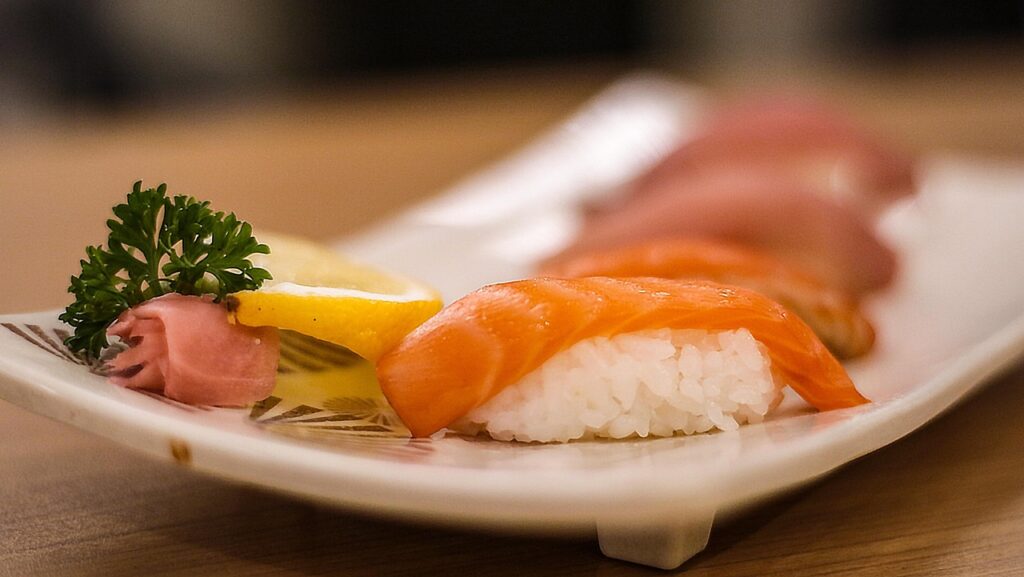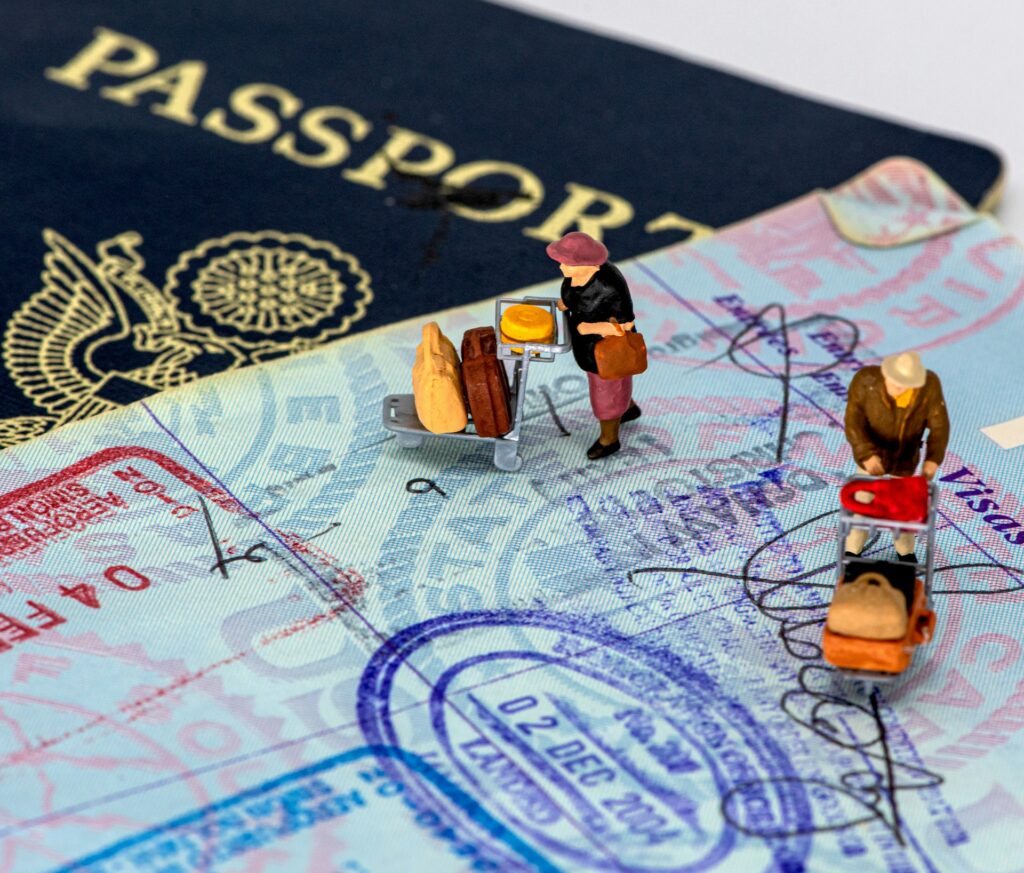Japan. A land where ancient traditions and futuristic cityscapes coexist in perfect harmony. You’re dreaming of serene temples, bustling Tokyo crossings, and unforgettable cuisine. Your bags are nearly packed, and the excitement is building.
But alongside that excitement, a small question might be lingering: “What if I do something wrong?” With a culture so rich and beautifully distinct, it’s natural to worry about unintentionally breaking a local custom.
Fear not. This guide is designed to be your trusted companion. We’ll walk you through 10 surprising things you shouldn’t do in Japan to ensure a respectful and smooth experience. Then, we’ll reveal 5 must-have items that will transform your trip from good to great. By the end, you’ll be ready to navigate Japan with the confidence of a seasoned traveler.
- Part 1: 10 Common Mistakes to Avoid in Japan
- 1. Chopstick Faux Pas
- 2. The No-Tipping Rule
- 3. Eating While Walking
- 4. Finishing Your Plate (and Glass)
- 5. Making Phone Calls on Trains
- 6. Opening or Closing Your Own Taxi Door
- 7. Tossing Your Trash Anywhere
- 8. Showing Tattoos Freely at Onsen (Hot Springs)
- 9. Photographing Without Permission
- 10. Forgetting to Take Off Your Shoes
- Part 2: 5 Travel Essentials That Will Dramatically Improve Your Trip
- Conclusion
Part 1: 10 Common Mistakes to Avoid in Japan
Navigating a new culture is part of the adventure. While the Japanese are known for being incredibly welcoming and understanding towards tourists, knowing a few key customs will make your interactions smoother and show deep respect. Let’s start with some of the most common mistakes visitors make.
1. Chopstick Faux Pas
In Japan, chopsticks (お箸, ohashi) are more than just utensils; they are a part of cultural tradition. While no one expects you to be an expert, there are a few absolute taboos to avoid as they are strongly associated with funeral rites.
- What to do instead: When not in use, place your chopsticks neatly on a chopstick rest (hashioki). If you want to share food, place it on a small plate (torizara) for the other person to pick up.
- What not to do: Never stick your chopsticks upright into your bowl of rice (tate-bashi). Don’t pass food directly from your chopsticks to another person’s chopsticks (awase-bashi). And don’t stab your food with your chopsticks (sashi-bashi).
- Why it’s a mistake: The first two actions are performed as part of Buddhist funeral ceremonies. Doing them at the dinner table is considered very bad luck and disrespectful.
2. The No-Tipping Rule
While it may feel natural to leave a tip for excellent service in many cultures, doing so in Japan can cause confusion and even be considered a bit rude.
- What to do instead: A simple, polite “ごちそうさまでした” (gochisousama deshita), meaning “Thank you for the meal,” is the best and most appreciated way to show your gratitude.
- What not to do: Don’t leave cash on the table or try to hand extra money to your server after a meal.
- Why it’s a mistake: In Japan, excellent service is the standard, not the exception, and it’s fully included in the bill. Leaving a tip can imply that you think the staff isn’t paid enough or that the service was somehow not standard. The staff will likely be confused and may even chase you down to return the money.
3. Eating While Walking
In Japan, the act of eating is generally done while seated or standing still. Eating while walking (aruki-gui) is widely considered poor manners.
- What not to do: Avoid eating snacks, ice cream, or other food items while walking down a busy street or on public transport.
- Why it’s a mistake: It’s seen as unrefined and can be messy for you and those around you. It also shows a lack of appreciation for the food you’re eating. While there are exceptions, like at a festival (matsuri) with food stalls, it’s a good general rule to follow.
- What to do instead: If you buy street food, it’s customary to stand to the side, near the stall where you bought it, to finish your food. Then, dispose of the rubbish in the vendor’s bin before moving on.
4. Finishing Your Plate (and Glass)
In Japan, there is a strong cultural concept called mottainai (勿体ない), which is a sense of regret concerning waste. This extends to food, and finishing everything on your plate is considered a sign of good manners and respect for the person who prepared the meal.
- What not to do: Avoid leaving significant amounts of food or drink behind, especially rice.
- Why it’s a mistake: Leaving food can be interpreted as a sign that you did not enjoy the meal. Rice, in particular, holds a special place in Japanese culture, and leaving even a single grain in your bowl is often considered impolite by older generations.
- What to do instead: Try to order only an amount you can comfortably finish. It shows appreciation for the food, the ingredients, and the chef’s hard work. If you are truly full, it is not a major offense, but making an effort is always appreciated.

5. Making Phone Calls on Trains
Japanese trains, especially during commute hours, can be very crowded, yet they remain remarkably quiet. This is because talking on the phone on public transport is a major breach of etiquette.
- What not to do: Avoid answering or making phone calls while in the train cars.
- Why it’s a mistake: Trains and buses are considered public spaces where consideration for others is paramount. Loud conversations are seen as a disturbance to other passengers who may be resting, reading, or simply enjoying a quiet commute.
- What to do instead: Set your phone to silent mode (called マナーモード, manaa moodo in Japan). If you must take a call, you can step off at the next station to do so, or move to the deck area between train cars for a very brief and quiet conversation. Texting and Browse are perfectly acceptable.
6. Opening or Closing Your Own Taxi Door
This is one of the most common surprises for first-time visitors. When you hail a taxi in Japan and it pulls up, your instinct might be to reach for the handle of the rear passenger door. Resist that urge!
- What to do instead: Simply stand on the curb and wait. The driver will open the door for you automatically. When you arrive at your destination and have paid, the driver will open it again for you to exit. Just step out, and the door will magically close behind you.
- What not to do: Don’t try to open the rear passenger door of a taxi by yourself, and don’t slam it shut when you get out.
- Why it’s a mistake: Nearly all taxis in Japan have automated passenger doors that are operated by the driver from their seat. Trying to force the door open or closed can damage the mechanism.
7. Tossing Your Trash Anywhere
Visitors to Japan are often surprised by how clean the streets are, despite the striking lack of public trash cans.
- What not to do: Do not litter or expect to find a bin on every corner.
- Why it’s a mistake: After a major domestic terrorism incident in 1995, many public bins were removed for security reasons. As a result, the culture shifted towards personal responsibility, and people are expected to take their own trash home.
- What to do instead: Be prepared. Carry a small plastic bag with you to store your rubbish throughout the day. You can typically find trash cans inside train stations, next to vending machines, and inside convenience stores (where you are often expected to throw away only trash from items purchased there).

8. Showing Tattoos Freely at Onsen (Hot Springs)
While tattoos have become mainstream fashion in many parts of the world, in Japan, they can still carry a strong historical association with the yakuza (Japanese organized crime). This perception is changing, but it affects rules at some public facilities.
- What not to do: Don’t enter a public bath, onsen (hot spring), gym, or pool without checking their tattoo policy first.
- Why it’s a mistake: Many establishments have a strict “no tattoo” policy to ensure all guests feel comfortable and secure. Being asked to leave after you’ve already undressed can be an embarrassing experience.
- What to do instead: If you have tattoos, research “tattoo-friendly” onsen in advance. Many websites and guides are available. Alternatively, you can book a ryokan (traditional inn) that offers a private onsen, either in your room or available for reservation (kashikiri-buro). For small tattoos, covering them with a waterproof bandage may be acceptable, but always check the rules.

9. Photographing Without Permission
Japan is an incredibly photogenic country, but it’s important to be mindful of privacy and sacred spaces.
- What not to do: Avoid taking close-up photos of people without their consent. Also, be aware of “no photography” signs, especially inside temples, shrines, and museums.
- Why it’s a mistake: It’s a matter of basic privacy and respect. In sacred spaces, photography can be seen as disruptive to worshippers and disrespectful to the deities or historical artifacts.
- What to do instead: If you wish to photograph a person (like a street performer or someone in a beautiful kimono), always ask politely first. A simple, “すみません、写真いいですか?” (Sumimasen, shashin ii desu ka? “Excuse me, is a photo okay?”) with a smile goes a long way. Always obey “no photo” signs (撮影禁止, satsuei kinshi).
10. Forgetting to Take Off Your Shoes
The line between “outside” (unclean) and “inside” (clean) is extremely important in Japanese culture.
- What not to do: Do not wear your outdoor shoes when entering someone’s home, a traditional ryokan, a temple’s main hall, or even in some restaurant seating areas (zashiki) and clothing store fitting rooms.
- Why it’s a mistake: Wearing street shoes indoors is considered a significant breach of hygiene and respect.
- What to do instead: Look for the genkan, the lowered entryway where shoes are removed. If you see slippers laid out or other people’s shoes neatly arranged, it’s your cue to take yours off. You will often be provided with indoor slippers. Just remember to also remove these slippers before stepping onto tatami mat flooring.
Part 2: 5 Travel Essentials That Will Dramatically Improve Your Trip
Knowing the etiquette is half the battle. The other half is being well-prepared. These five essential items will help you navigate Japan with ease, saving you time, money, and stress, allowing you to focus on the experience.

1. A Reliable Internet Connection (Pocket Wi-Fi or eSIM)
While Japan is technologically advanced, free public Wi-Fi isn’t as widespread or reliable as you might think. A personal internet connection is non-negotiable for using Google Maps, translation apps, checking train schedules, and discovering hidden gems on the go. An eSIM is a convenient digital option, while a pocket Wi-Fi device is great for groups.
2. A Portable Power Bank
Using your phone for navigation, taking photos and videos, and translating conversations will drain your battery faster than you expect. A portable power bank is a true lifesaver, ensuring you’re never left stranded with a dead phone when you need it most.
3. A Small Hand Towel (Tenugui or Handkerchief)
This is a small but crucial item. Many public restrooms, particularly in train stations and parks, do not have paper towels or hand dryers. Carrying your own small towel is a hygienic necessity. For a truly Japanese experience, consider a tenugui—a traditional, versatile cotton towel with beautiful designs.
4. A Prepaid IC Card (Suica, Pasmo, or ICOCA)
This is your key to effortless travel. An IC card is a rechargeable smart card that allows you to simply tap on and off trains, subways, and buses without having to buy a ticket for every ride. It can also be used for payment at most convenience stores, vending machines, and even some restaurants.

5. A Good Coin Case
While Japan is technologically advanced, you might be surprised by how many smaller restaurants, local shops, ticket machines, and temples still operate on a cash-only basis. Japanese currency includes six different types of coins (from ¥1 to ¥500), and you’ll find your pockets or wallet filling up with them quickly.
- Why it’s essential: Fumbling with a handful of unfamiliar coins at a busy register can be stressful. A dedicated coin case with a wide opening makes it incredibly easy to see your change and pay exact amounts quickly. It’s a small item that makes a huge difference in your day-to-day convenience.
- What to do: Get a simple, functional coin purse before you leave.
Conclusion
Japan is a country that richly rewards mindful and respectful travelers. The key to navigating its unique culture isn’t about memorizing a long list of rules, but about understanding the core values behind them: respect, consideration for others, and harmony.
By being aware of local etiquette and preparing with a few essential items, you free yourself from stress and uncertainty. This allows you to truly immerse yourself in the moment—whether you’re savoring a perfectly prepared meal, discovering a tranquil temple, or simply observing the quiet beauty of everyday life.
We hope this guide gives you the confidence to explore with curiosity and an open heart. Embrace the journey, find beauty in the small details, and have a truly unforgettable adventure in Japan.



Comments